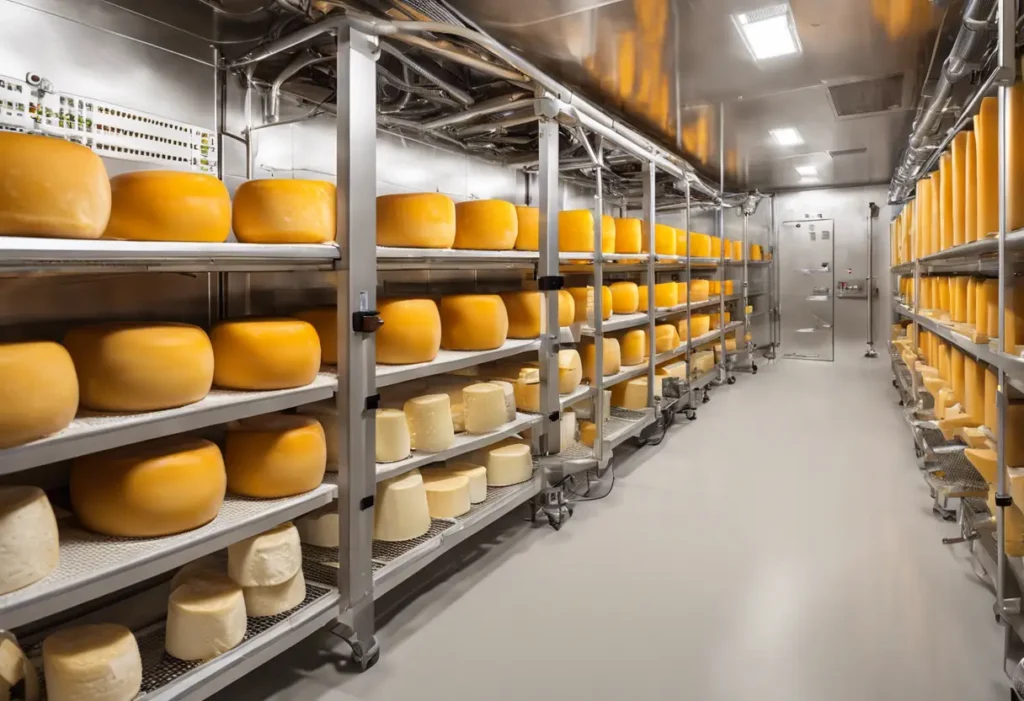In a striking reversal of modern food trends favoring convenience over craft, urban dwellers are carving out space for an unexpected culinary endeavor: miniature cheese caves. These climate-controlled nooks—ranging from retrofitted wine fridges to custom-built cabinets—are enabling city residents to age artisanal cheeses in apartments where traditional cave aging would seem impossible. This movement isn’t just about gourmet indulgence; it reflects a deeper cultural shift toward food sovereignty, scientific curiosity, and the rejection of industrialized dairy.
The Science of Small-Scale Aging
Commercial cheese caves—massive underground facilities with precise humidity (80-95%) and temperature (7-13°C) controls—have long been the domain of professional affineurs. But advances in compact refrigeration technology have democratized these conditions. Modern micro-caves utilize:
- Peltier-cooled cabinets (whisper-quiet, energy-efficient)
- Hygrometers with Bluetooth alerts for real-time humidity tracking
- UV-resistant glass doors to prevent light degradation
Home aging enthusiasts report success with small-format cheeses like crottins, tomme, and even experimental washed-rind varieties. The process transforms bland store-bought wheels into complex, personalized creations—a Camembert taken from supermarket mild to funky profundity in just six weeks.
The Psychology of Fermentation Fervor
This trend taps into multiple modern anxieties and aspirations:
- Control in an unstable world
In an era of supply chain disruptions, aging your own cheese offers tangible food security. A properly stored wheel becomes a edible savings account, gaining value (flavor) over time. - Slow food as resistance
Against algorithmic meal kits and ultra-processed foods, cheese caves represent manual, observational cooking. Each batch requires daily attention—brushing molds, flipping wheels—creating meditative rituals. - STEM education through dairy
Urban parents use micro-caves to teach kids microbiology (Penicillium cultures), chemistry (pH changes), and patience (waiting months for edible results).
Space-Saving Innovations
The real ingenuity lies in adapting cave principles to tiny homes:
- Vertical aging racks in converted beverage coolers
- Bento-box style compartmentalized units for multiple cheese types
- Balcony “cave sheds” for cold-climate dwellers
Some avant-garde setups even incorporate webcams for remote mold monitoring or IoT sensors that tweet humidity updates—a far cry from the stone cellars of Normandy.
The Economic Case
While commercial artisan cheeses can cost $30+/lb, home aging lets buyers:
- Rescue “young” cheeses sold at discount
- Customize flavors (bourbon-washed rinds, herb-infused pastes)
- Barter aged wheels in local food networks
A $100 mini-fridge can pay for itself within months through these savings and trades.
Challenges and Controversies
Not all urban cheesemakers succeed. Common pitfalls include:
- Over-ambitious projects (attempting 18-month aged Gouda in a studio apartment)
- Cross-contamination (blue mold invading everything)
- Neighbor complaints (especially with pungent washed-rinds)
Purists argue true terroir requires natural caves, but urbanites counter that controlled environments actually produce more consistent results.
Cultural Implications
Micro-caves symbolize a broader reclaiming of “peasant” skills by digital-era professionals. Lawyers and software engineers now obsess over rind development like Alpine farmers—a peculiar inversion of modernity. Some sociologists see this as part of the “new domesticity” movement, where desk workers seek fulfillment through hands-on food crafts.
The Future of Home Cheese
As the trend grows, we’re seeing:
- Co-op aging spaces in apartment buildings
- Cheese cave Airbnb experiences
- DIY cave kits with pre-inoculated boards
What began as a niche hobby may reshape urban food systems, creating hyper-local cheese terroirs based on apartment microclimates—a Brooklyn blue distinct from a Chicago chèvre.
Conclusion
The micro-cheese cave movement proves that even in our automated world, humans still crave tangible connections to ancient foodways. These miniature aging chambers aren’t just appliances; they’re portals to slower time, microbial wonders, and the quiet satisfaction of transforming milk into something transcendent. As one urban affineur quipped while brushing a blooming Stilton: “My great-grandparents had a root cellar. I have a smart fridge. Same impulse, different century.”
Check these out for related content :
https://uggaustraliasalenet.com/
https://francemedianews.com/
https://autofans.us/
https://travellingtrailer.com/
https://kumpulanbandarpoker.org/
https://bartonunited.co.uk/
https://farianews.com/
https://evemed.co.uk/
https://thecbdstoreonline.com/
https://nixsmate.com/
https://newsoaxaca.com/
https://mrfinancechallenge.com/
https://destinationovertornea.org/
https://fallenandflawed.com/
https://micanet.net/
https://roverpolo.org/
https://tamava.org/
https://isleuthhound.com/
https://nodalpoint.net/
https://keralanewsnow.com/
https://nr-7releases.com/
https://nkhomegroup.com/
https://truenewsd.com/
https://humaswonogirinews.org/
https://swisscartier.co.uk/
https://luellemag.com/
https://sammatson.net/
https://wesserblog.co.uk/
https://legalkushfly.com/
https://bzahomestylecrafts.com/
